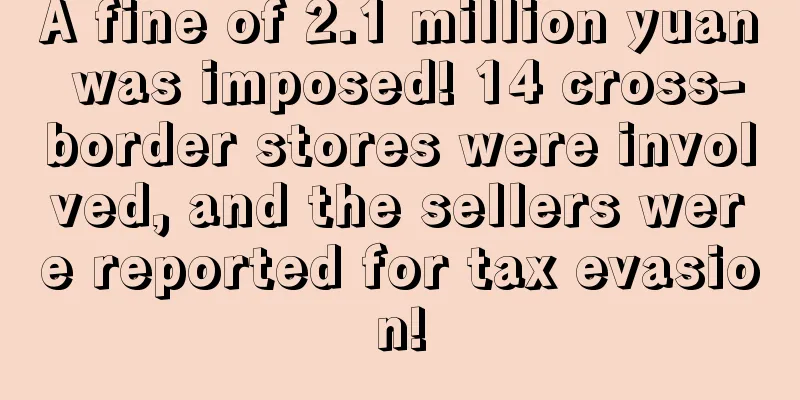Crash! Europe, America and Japan restrict shipments! A large number of sellers' shipment plans have been cancelled...

|
Another trouble for cross-border sellers: After the US site was restricted from shipping, the European and Japanese sites were also restricted. Many sellers and service providers revealed this news in their circle of friends, saying that European sites have introduced warehousing restrictions, and some sellers have also reported that the Japanese site has also restricted warehouse establishment.
With the previous experience of being restricted from creating shipments, many sellers heard the news and rushed to the backend to create shipments. As a result, they were really restricted! Subsequently, the Japanese site also restricted shipments, and some sellers directly received emails regarding the restrictions. Sellers were in an uproar as the news came out, with many expressing doubts such as “I seriously suspect that this is fake news released by the freight forwarder.” However, in the evening, when many sellers created shipments, they found that the inventory of the goods had reached the maximum inventory level! However, many sellers received the news and created multiple shipments before the restriction, thinking they could rest easy. Unexpectedly, Amazon canceled the shipments! Some sellers posted pictures saying that all the shipments they created were cancelled and they worked in vain... Some sellers also said they received emails directly from Amazon... Regarding this matter, sellers can choose overseas warehouse transit or shipment based on the situation of their own products to avoid the risk of out-of-stock. Amazon issued an announcement to inform sellers that long-term storage fees will be settled on August 15, and long-term storage fees will be charged for goods stored in Amazon warehouses for more than 365 days. Go check to see if you will be charged for your inventory, long-term storage fees are not cheap! The 15th of every month is the long-term storage fee settlement day for the Amazon FBA program. At that time, Amazon will charge $6.9 per cubic foot or $0.15 per item (whichever is greater) for goods stored in its U.S. operations center for more than 365 days. Long-term storage fees are in addition to monthly inventory storage fees. Amazon's US and Mexico sites announced that they will soon conduct a long-term storage fee inventory count. The original text is as follows: August 15, 2020 is the next long-term storage fee inventory cleanup date for the Fulfillment by Amazon (FBA) program in the United States. On this day, we will charge a long-term storage fee of $6.90 per cubic foot or $0.15 per unit (whichever is greater) for inventory that has been stored in our US fulfillment centers for more than 365 days. Amazon Logistics calculates inventory age on a first-in, first-out (FIFO) basis throughout its fulfillment network. Regardless of which units were actually delivered or removed, Amazon Logistics deducts the units sold or removed from the inventory that has been in the fulfillment network the longest. The Recommended Removals report automatically calculates the number of units per ASIN that you need to remove to avoid incurring long-term storage fees (assuming no further sales occur), or you can use the Inventory Age and Inventory Health reports to determine the age of each ASIN. If you remove an ASIN that is subject to long-term storage fees on the next inventory cleanup date, you will not be able to ship us units for that ASIN for three months after that date unless inventory for that ASIN falls below estimated sales in the next eight weeks. Mexico Station August 15, 2020 is the next long-term storage fee inventory cleanup date for the Fulfillment by Amazon (FBA) program. On this date, we will charge a long-term storage fee of 3.48 Mexican pesos per cubic decimeter or 2.32 Mexican pesos per unit, whichever is greater, for inventory that has been in a Mexican fulfillment center for more than 365 days. These fees include VAT. For items for which we stop accepting orders from customers because we are unable to pick, pack, or deliver, we will waive monthly storage fees during the affected period. Amazon Logistics calculates inventory age on a first-in, first-out (FIFO) basis throughout its fulfillment network. Regardless of which units were actually delivered or removed, Amazon Logistics deducts the units sold or removed from the inventory that has been in the fulfillment network the longest. The Recommended Removals report automatically calculates the number of units per ASIN that you need to remove to avoid incurring long-term storage fees (assuming no further sales occur), or you can use the Inventory Age and Inventory Health reports to determine the age of each ASIN. (Source: SellerGrowth ) |
Recommend
Amazon and Walmart compete with each other not only on price
Competition between giants will cause greater fluc...
Order volume is "0"! Amazon sellers' orders plummeted to single digits in February!
Amazon US seemed to be shrouded in a cold winter ...
What is JB Hi-Fi? JB Hi-Fi Review
JB Hi-Fi was founded in 1974 and is a well-known e...
A detailed explanation of Amazon Review Weight! (Bonus at the end of the article)
First of all, I would like to make it clear that ...
What is Shangbiao Intellectual Property Group? Shangbiao Intellectual Property Group Review
Shangbiao is a trademark brand of Shanghai Shangbi...
What is Shenzhen Dianchuang? Shenzhen Dianchuang Review
Shenzhen Dianchuang Intellectual Property Agency C...
What is Soolve? Soolve Review
Soolve is a very interesting text cloud integratio...
Major adjustment of the US dollar exchange rate! Many big sellers seized the opportunity to expand against the trend
Today, the central bank announced the latest RMB e...
What is Amazon Hijacking? Amazon Hijacking Review
Amazon follow-selling is a way of selling by shari...
Collection | Share the practical tutorial of creating a shipment without warehouse division (detailed steps)
Share the practical tutorial of creating a shipmen...
What is European Alipay Wirecard? European Alipay Wirecard Review
Wirecard AG is a German global financial services ...
USPS releases 2023 financial report, net loss reaches $6.5 billion
Recently, the United States Postal Service (USPS) ...
The U.S. Department of Justice seized $12 million worth of counterfeit drugs and pointed the finger at China!
<span data-shimo-docs="[[20,"获悉,据外媒报道,近日美国...
What is Webpower? Webpower Review
Webpower is an email marketing tool that provides ...
Seizing consumer preferences! Target changes its marketing style in online business!
It is learned that Target, one of the leading reta...









